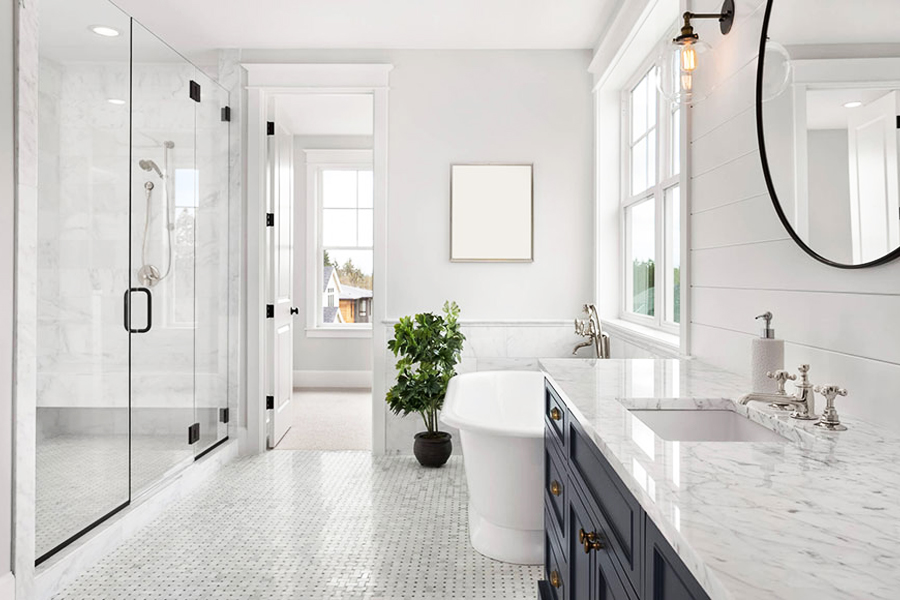Designing a bathroom involves careful consideration of functionality, aesthetics, and personal preferences. Here are some key elements to consider when planning a bathroom design:
- Layout: Begin by determining the layout of your bathroom, taking into account the available space, plumbing considerations, and desired features such as a bathtub, shower, or vanity. Optimize the layout for efficient use of space and ease of movement.
- Fixtures and Fittings: Choose high-quality fixtures and fittings that suit your style and meet your functional needs. This includes selecting a toilet, sink, bathtub, or shower enclosure that fits the space and complements the overall design aesthetic.
- Materials and Finishes: Select durable and water-resistant materials for surfaces such as floors, walls, and countertops. Popular options include porcelain tiles, ceramic tiles, natural stone, and waterproof laminate. Choose finishes and colors that create a cohesive look and enhance the visual appeal of the space.
- Lighting: Incorporate adequate lighting to enhance functionality and create ambiance in the bathroom. Consider a combination of task lighting, ambient lighting, and accent lighting to illuminate different areas and set the mood. Install sconces, recessed lights, or pendant lights for both style and functionality.
- Storage: Maximize storage space in the bathroom by incorporating built-in cabinets, shelves, or vanity units. Consider factors such as accessibility, organization, and aesthetics when planning storage solutions. Utilize vertical space with tall cabinets or shelving units, and opt for drawers or baskets for smaller items.
- Ventilation: Proper ventilation is essential to prevent moisture buildup, mold growth, and unpleasant odors in the bathroom. Install an exhaust fan or a window to promote air circulation and remove humidity. Consider adding a heated towel rail or radiant floor heating for added comfort.
- Accessibility: If designing a bathroom for aging in place or for individuals with mobility challenges, prioritize accessibility features such as grab bars, non-slip flooring, curbless showers, and wider doorways. Ensure that the layout and fixtures are easily accessible and accommodate users of all abilities.
- Green Features: Incorporate eco-friendly design elements to reduce water consumption, energy usage, and environmental impact. Choose water-efficient fixtures, such as low-flow toilets and faucets, and consider installing a water-saving showerhead. Opt for sustainable materials and finishes, such as bamboo flooring or recycled glass countertops.
- Personal Touches: Add personality and character to the bathroom with decorative accents, artwork, and accessories. Consider incorporating plants, artwork, textiles, or decorative mirrors to infuse the space with style and personality. Choose elements that reflect your taste and create a welcoming atmosphere.
- Maintenance: Finally, consider the ease of maintenance when selecting materials and fixtures for your bathroom design. Choose low-maintenance finishes that are easy to clean and resistant to moisture, mold, and stains. Invest in quality products and materials that will withstand the rigors of daily use and require minimal upkeep.
By carefully planning and considering these key elements, you can create a beautiful, functional, and comfortable bathroom design that meets your needs and reflects your personal style. Whether you prefer a sleek and modern look or a classic and timeless aesthetic, thoughtful design choices can transform your bathroom into a sanctuary of relaxation and rejuvenation.
